Century egg and pork congee is a classic Chinese savory congee that can be eaten for breakfast, lunch, or dinner! The congee is cooked to the perfect thickness with pieces of century egg and marinated pork so that every spoonful is packed with umami.

What's your favorite congee? Ours is undoubtedly this century egg and pork congee because there's no other congee out there that has the same umami flavor.
You can often find century egg and pork congee offered at some Chinese restaurants and at dim sum restaurants. We also highly recommend enjoying this congee and savory congee in general with some Chinese fried dough (you tiao) or scallion pancakes. It's delish!
For more Chinese comfort food, also check out our sha cha beef fried rice, tomato egg stir fry, and red braised pork (hong shao rou).

Jump to:
Ingredients and substitutions
Please scroll down to the recipe card for the ingredient quantities!
For the congee:
- White rice - The foundation to good congee is white rice that contains a good amount of starch, like medium grain and short grain white rice. Some people also like to use jasmine rice or a mix of rice for congee.
- Water - You could use pork bone stock, but water is the most common as it is very accessible and keeps the congee light.
- Century eggs - They're the co-star of this savory congee! Century eggs are packed with umami flavors that cannot be replicated with anything else.
- Oil - Just a little is added to the rice while soaking for better texture and flavor.
- Green onion - Both as a garnish and to add a little color and some onion flavor to the congee.
- Salt - For personal preference. If you prefer the pork and century egg congee to be more seasoned a pinch of salt can be added. Or, you can enjoy it as is.

For the pork:
- Lean pork - Any sinew-free, lean pork can work for this congee. Our favorites are pork chops, pork loin, and sometimes pork shoulder/pork butt. If you prefer, you could use chicken breast or chicken thighs instead.
- Ginger - Some ginger will get rid of any unwanted pork-y flavor and brightens up the whole congee.
- Water - Since we are using lean pork, adding some water will help keep the pork from drying out.
- Shaoxing rice wine - The cooking wine will make the pork and the congee more fragrant. If you don't have shaoxing rice wine, you could use some dry sherry instead.
- Salt - To season the pork.
- White pepper - This is a classic touch and classic pairing for pork. White pepper is used to help rid the pork of gaminess. If you prefer, you could do without.
- Cornstarch - The pork is marinated similar to the classic velveting process. So cornstarch is added to create a protective coating on the pork. If you don't have cornstarch, potato starch is a good substitution.
- Oil - A small amount of oil added to the pork will help prevent the pork from clumping as much and to prevent the pork from drying out.

What are century eggs?
Century eggs (皮蛋 or 松花皮蛋 - sōng huā pí dàn) are also known as thousand year eggs, preserved duck eggs, and a few other names. They are uniquely dark with brownish-black egg white that's similar to boiled egg whites but a little firmer and bouncy. You'll also often find snowflake patterns on the egg call sōng huā (松花) created from salt crystals. The yolk is usually a dark grayish green, sometimes yellow, that's still slightly gooey. The yolk is where all the talked-about savory umami is at!
These century eggs are made by coating duck eggs in a mixture of salt, lime, ash, and rice, tea, or clay. The eggs are then preserved for about one month. These preserved eggs requires no cooking. Just crack, peel, rinse the eggs, and they're ready to eat or added to dishes.

The best rice for making congee
The best congee are made with medium grain white rice or short grain white rice, like sushi rice. These types of white rice contain a higher amount of starch, which will properly thicken the congee and have a soft, silky mouthfeel.
Some people also like to use jasmine rice, which is super fragrant and thickens better than regular long grain rice. If you like, you can also use a combination of jasmine rice and medium or short grain white rice.
How to make century egg and pork congee
Prepare the rice:
Wash and rinse the rice 2 to 3 times, until the water is mostly clear. On the last rinse, drain most of the water, leaving enough to cover the rice. Add a teaspoon of oil and mix. Set aside and the rice soak for about 30 minutes or overnight.
Marinade the pork:
In a bowl, add the sliced pork, ginger, water, rice wine, salt, and a generous dash of white pepper. Mix until the liquids are absorbed by the pork. Add the cornstarch and mix until well combined. Finish with 1 teaspoon of oil and mix well.


Make the congee:
1. Add the 4 cups of water to a claypot or stainless steel pot and bring it to a boil. Add the soaked rice (water and all) and give it a stir. Cover the pot and bring to a boil.

2. When the water returns to a boil, reduce the heat to medium low or low, to keep the water at a simmer. Give the rice a stir and cover the pot. Let the congee cook for 23 to 25 minutes.
📝 Note: As the congee thickens, it may overflow, especially when the lid is fully covering the pot. So if needed, crack the lid open or remove the lid and keep an eye on the congee*
3. After 23 to 25 minutes, the congee will look visibly thicker. Give the congee a thorough stir, especially at the bottom of the pot. Then, add the chopped century eggs. With the pot uncovered, cook the congee for 3 minutes, stirring frequently.
4. Add the marinated pork to the congee and stir quickly to separate the pork slices. Cook for about 3 more minutes, or until the pork is cooked through, stirring frequently.
🌟 Pro tip: After adding the pork, stir vigorously with a chopsticks or even a spoon. This will help break up the rice and make the congee thicker. Just make sure to be careful of the splash! Also, it's much easier to do this after adding the pork because there's more substance in the congee.
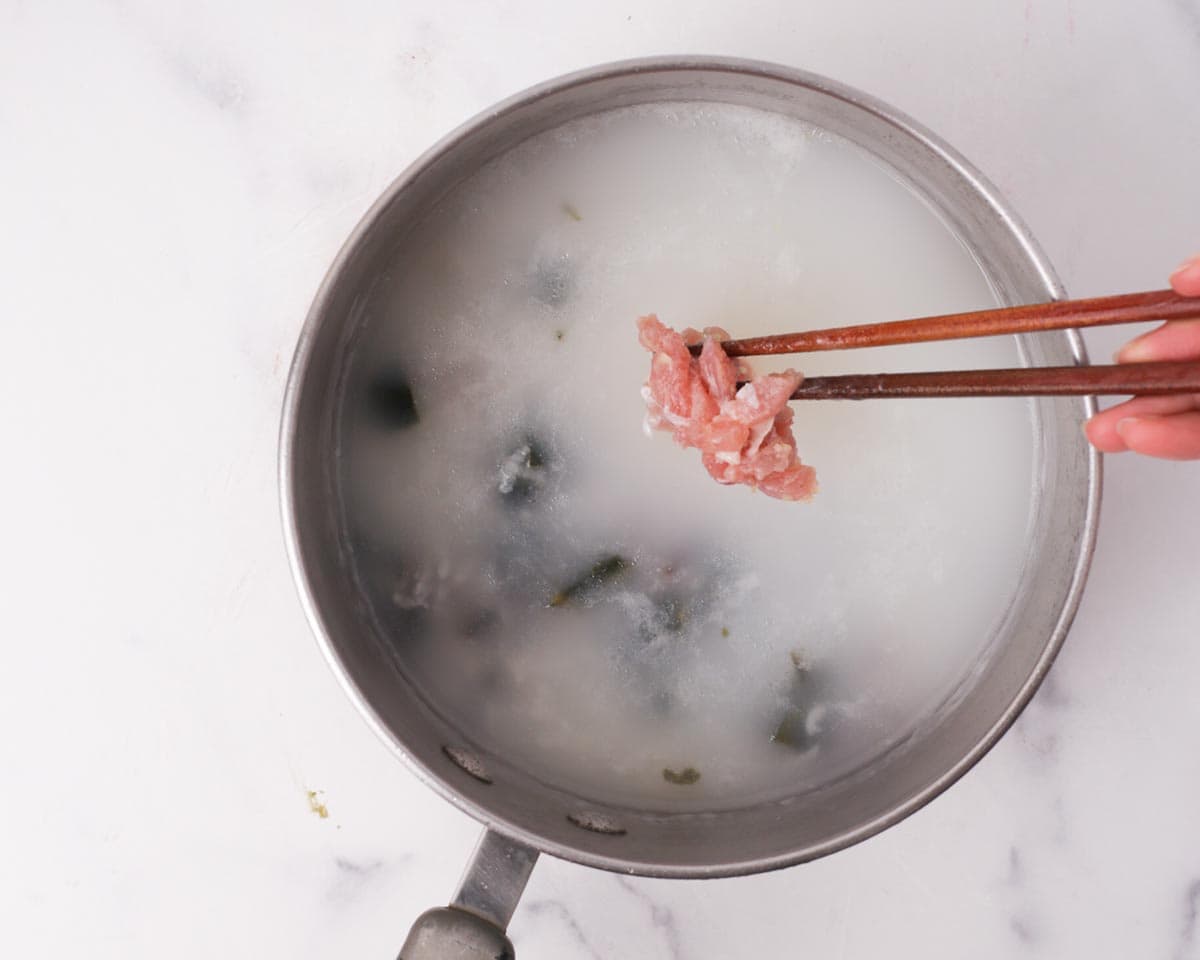

5. Finish by adding green onions into the congee and seasoning the congee with a pinch of salt if you prefer the congee more seasoned. Then, garnish with century egg wedges and more green onions.

🚨Caution! The congee will be super hot. Please be careful when tasting and eating.
Rice to water ratio
Honestly, there's no right rice to water ratio. It's all up to your personal preference. Personally, we like our congee with a 1 to 8 ratio, rice to water (ie. 1 cup rice to 8 cups water). However, feel free to adjust to your preference. The most common ratio ranges from 1 part rice to 6 parts water all the way to 1 part rice to 13 parts water.

Recipe tips
- Don't skip the soaking. Soaking the rice helps cut down cooking time. You can start soaking the rice the night before, the first thing in the morning when you wake up, or before you start any other preparation for the congee. But if you really don't have time, soak the rice for as long as you can, and pulse it in the blend a couple of times to break down the rice a little bit. This will also help cut down the cook time.
- When simmering, keep the heat around medium low. If the heat is too high, especially towards the end when the congee is thicker, the congee will stick to the bottom of the pot. Plus, higher heat means it is also more likely that the congee will overflow when cooking.
- Stir the pork slices quickly when adding to the congee. If you don't stir the pork fast or early enough, they may stick together and cook as a clump.
- The more you stir the congee, the thicker it will become. This is especially effective towards the end of the cooking process. When the rice gets more broken up, the congee will thicken more.

Storage and reheating
Leftover congee can be stored in an airtight container in the fridge, for up to 3 to 4 days, once it is completely cooled. To reheat the congee, transfer the refrigerated congee to a pot and reheat over medium heat. If needed, add some water to the congee to help thin it out. Make sure to stir frequently until the congee is hot.
FAQ
Absolutely! If you're not a big fan of pork, you can substitute with chicken breast or chicken thigh instead. Just thinly slice the chicken like you would the pork.
Congee and jook are essentially the same thing. They are both rice porridge. Although, congee is the generic term used for rice porridge from anywhere. Jook (粥), on the other hand, is Cantonese for rice porridge, as zhōu (粥) is rice porridge in Mandarin.
If your congee looks watery or looser than your preference, open the lid and let the congee cook on medium low to medium heat until it reaches your desired consistency. Do note that, when the congee starts to look thicker, stirring frequently or whisking it will also make it thicker. If possible, try to adjust the thickness of the porridge before adding the pork, to prevent overcooking the pork.
If the congee is thicker than you'd like, no worries! Simply add a little more water, by ¼ cup increments, to the congee until you reach your desired consistency.
If you’ve made this recipe or any recipes from our blog, please tag us on Instagram using #twoplaidaprons! You can also tag us in your Instagram stories using @two_plaid_aprons. We would love to see your creations! It absolutely makes our day! 🥰
📖 Recipe
Century Egg and Pork Congee (皮蛋瘦肉粥)
Ingredients
For the congee:
- ½ cup medium grain white rice or short grain
- 4 cups water
- 2 century egg peel and roughly chop (optional: slice half an egg into wedges for garnish)
- 1 teaspoon oil any neutral oil will do
- 1 stalk green onion thinly sliced (plus more for garnish)
- Salt as needed
For the pork:
- 4 ounces boneless pork chop cut into thin slices or strips
- 1 tablespoon ginger peeled and minced (about an inch knob)
- 1 teaspoon water
- 1 teaspoon Shaoxing rice wine
- ½ teaspoon kosher salt fine salt is okay too
- white pepper
- 1 teaspoon cornstarch
- 1 teaspoon oil any neutral oil is fine
Instructions
- Prepare and soak the rice:Wash and rinse the rice 2 to 3 times, until the water is mostly clear. On the last rinse, drain most of the water, leaving enough to cover the rice. Add a teaspoon of oil and mix. Set aside and let the rice soak for about 30 minutes or overnight.
- Marinade the pork:In a bowl, add the sliced pork, ginger, water, rice wine, salt, and a generous dash of white pepper. Mix until the liquids are absorbed by the pork. Add the cornstarch and mix until well combined. Finish with 1 teaspoon of oil and mix well.
- Make the congee:Add the 4 cups of water to a claypot or stainless steel pot and bring it to a boil. Add the soaked rice (water and all) and give it a stir. Cover the pot and bring to a boil.
- When the water returns to a boil, reduce the heat to medium low or low, to keep the water at a simmer. Give the rice a stir and cover the pot. Let the congee cook for 23 to 25 minutes.*As the congee thickens, it may overflow, especially when the lid is on the pot. So if needed, crack the lid open or remove the lid and keep an eye on the pot.*
- After 23 to 25 minutes, the congee will look visibly thicker. Give the congee a thorough stir, especially at the bottom of the pot. Then, add the chopped century eggs. With the pot uncovered, cook the congee for 3 minutes, stirring frequently.
- Add the marinaded pork to the congee and stir quickly to separate the pork slices. Let the congee cook for another 3 minutes, stirring frequently.*When adding the pork, make sure to stir quickly and vigorously. This will not only separate the pork slices, it will also help break up the rice to make the congee thicker.*
- Finish by stirring in some green onions, and if needed, season the congee with a pinch of salt if you prefer the congee more seasoned. Then, garnish with century egg wedges and more green onions.*Be careful when tasting the congee! It will be super hot! *
Notes
- Meat - This congee can technically be made with any lean meat, but most traditionally and popular choice is pork. We recommend, pork chops, pork loin, or even pork shoulder/pork butt. If you don't like pork, you can also use chicken breast or thigh.
- Rice to water ratio - It's up to your personal preference whether to make the congee thick or loose. We prefer a ratio of 1:8 but you can adjust as needed. The usual range is from 1:6 all the way to 1:13.




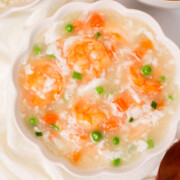



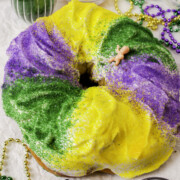


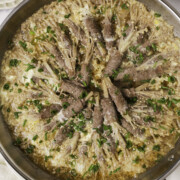








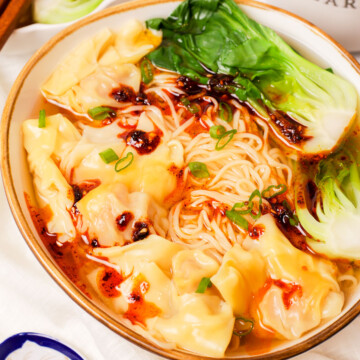

Comments
No Comments